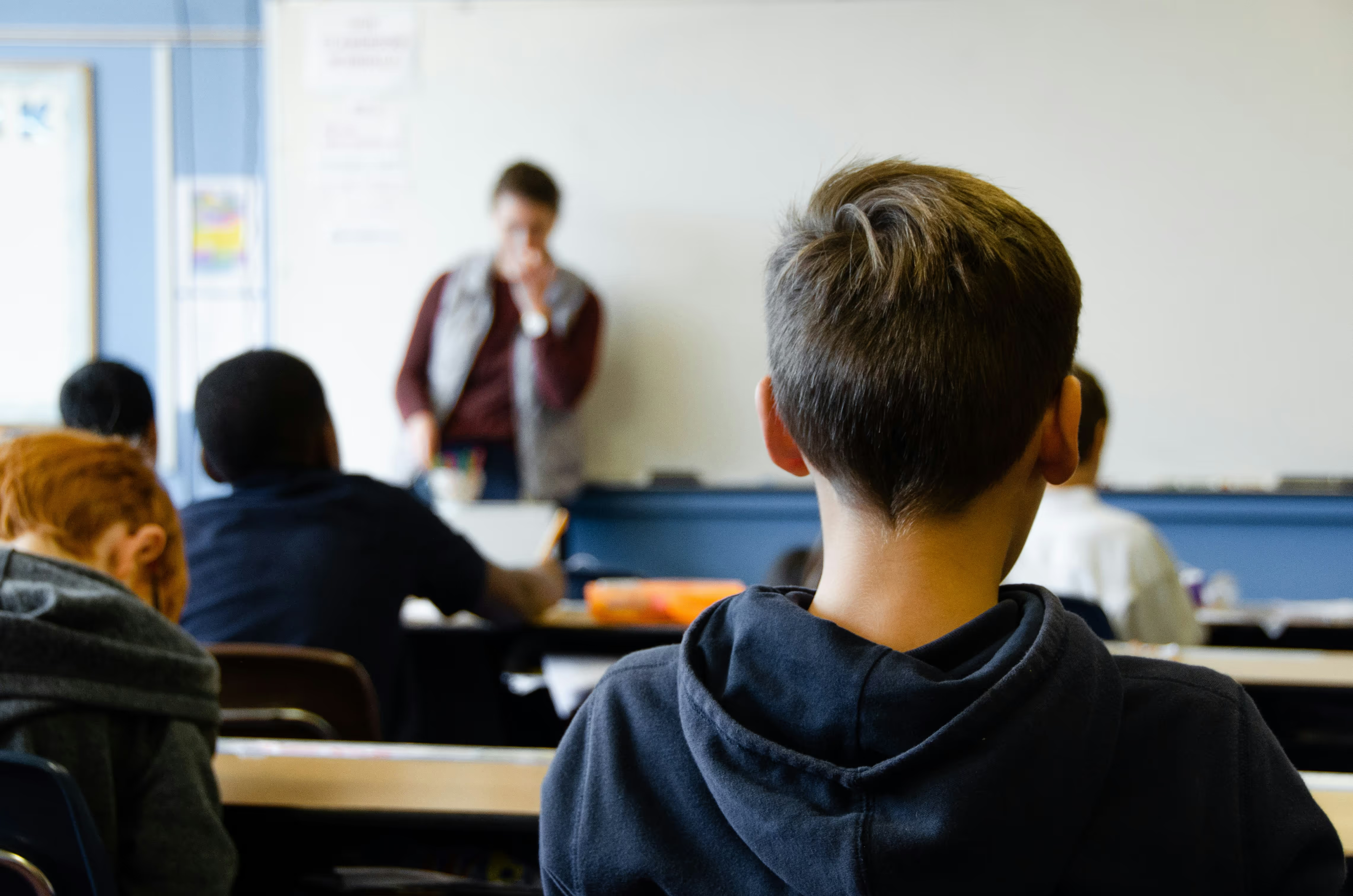Understanding Behavior Intervention Plans
Behavior Intervention Plans (BIPs) play a crucial role in guiding treatment and addressing challenging behaviors in individuals, particularly those diagnosed with autism. This section will explore what a Behavior Intervention Plan is and highlight the importance of implementing such plans.
-80.avif)
What is a Behavior Intervention Plan?
A Behavior Intervention Plan (BIP) can be seen as a blueprint for changing behavior, guiding treatment, and ensuring consistent responses to behaviors. It is a comprehensive document that includes interventions specifically selected based on the hypothesized or demonstrated function of the behavior, with the intention of reducing challenging behaviors.
The BIP outlines strategies, techniques, and supports that are tailored to the individual's needs, focusing on behavior reduction and skill development. It is designed to provide a roadmap for reducing problem behavior and teaching alternative, more appropriate ways for individuals to achieve their desired outcomes.
It is important to note that a well-written behavior plan not only aims to change the behavior of the individual but also the behavior of the adults who interact with the individual. The plan recognizes that learner behavior does not change unless the environment changes as well. Therefore, the BIP is not only about modifying the learner's behavior but also about guiding the behavior of those who support and interact with the learner.
Importance of Behavior Intervention Plans
Behavior Intervention Plans are essential for individuals who engage in challenging behavior that may interfere with their education or daily life. For learners who respond well to group contingencies or primarily receive services for skill acquisition, a BIP may not be necessary. However, if a learner exhibits challenging behavior at school, conducting a Functional Behavior Assessment (FBA) and developing a BIP is recommended [1].
The Individuals with Disabilities Education Act (IDEA) mandates the use of a Functional Behavior Assessment (FBA) and a Behavior Intervention Plan (BIP) when a child with disabilities displays behavior that poses a threat to their current school placement and the behavior is a manifestation of their disability. This legal requirement emphasizes the significance of BIPs in supporting the educational needs of individuals with disabilities.
By implementing a well-designed BIP, educators and professionals can provide consistent responses to challenging behavior, effectively reducing its occurrence. Moreover, BIPs contribute to the learner's long-term success by promoting skill development and teaching more appropriate ways to achieve desired outcomes. These plans are part of a larger treatment plan or Individualized Education Program (IEP), ensuring that interventions align with the individual's overall goals and educational objectives.
Understanding the purpose and value of Behavior Intervention Plans is crucial for parents, teachers, and professionals working with individuals who exhibit challenging behaviors. By implementing effective BIPs, it becomes possible to address these behaviors, promote skill acquisition, and create an environment conducive to the learner's growth and development.
Components of Behavior Intervention Plans
A Behavior Intervention Plan (BIP) is a formal, written plan that aims to teach and reward good behavior while preventing behavior that obstructs learning. It consists of several key components that work together to address challenging behaviors and promote positive outcomes for individuals.
Functional Analysis vs. Functional Behavior Assessment
Functional Analysis (FA) and Functional Behavior Assessment (FBA) are two terms often used interchangeably but have distinct differences in the field of Applied Behavior Analysis (ABA).
Functional Analysis involves manipulating environmental conditions to evoke challenging behavior, demonstrating control over the behavior. On the other hand, Functional Behavior Assessment collects data about an identified behavior to evaluate the conditions in which it occurs without manipulating existing variables. The difference lies in the degree of confidence in the results and the intrusiveness of the assessment.
Developing a Behavior Intervention Plan
Developing an effective Behavior Intervention Plan requires practice and specificity. The plan should be written in a way that the person implementing it understands exactly what is expected. The following components should be included:
Revising and Updating a Behavior Intervention Plan
Behavior Intervention Plans should be periodically reviewed and adjusted based on new information or the changing needs of the individual. This ensures that the plan remains effective and relevant. Regular communication and collaboration among the team involved, including the student, teacher, and other staff, are crucial in this process. By reviewing past incidents, report cards, and gathering feedback from the family, the BIP can be modified to better address the individual's behavior and learning needs.
By understanding the components of a Behavior Intervention Plan and distinguishing between Functional Analysis and Functional Behavior Assessment, parents and professionals can work together to create effective plans that support individuals in managing their challenging behaviors and promoting positive behavioral change.
Implementing Behavior Intervention Plans
Once a Behavior Intervention Plan (BIP) has been developed, it is essential to effectively implement it in order to support individuals in managing their behaviors. This section will explore when a Behavior Intervention Plan is needed, the requirements under the Individuals With Disabilities Education Act (IDEA), and the key elements of creating effective BIPs.
When is a Behavior Intervention Plan Needed?
Not all individuals require a Behavior Intervention Plan. The decision to implement a BIP should be based on the specific needs of the individual and the requirements of the funding source. Learners who respond well to group contingencies or primarily receive services for skill acquisition may not require a BIP. However, for individuals who engage in behavior that threatens their current school placement and when that behavior is a manifestation of their disability, a BIP is required by law.
Individuals With Disabilities Education Act Requirements
The Individuals With Disabilities Education Act (IDEA) mandates the use of a functional behavior assessment (FBA) and a Behavior Intervention Plan (BIP) for learners whose behavior poses a risk to their current school placement and is a result of their disability. This ensures that appropriate supports and interventions are in place to address the challenging behavior and promote the learner's success within the educational setting.
Creating Effective Behavior Intervention Plans
Writing an effective Behavior Intervention Plan requires practice and specificity. A well-developed BIP provides a clear roadmap for reducing problem behavior and teaching alternative, more appropriate behaviors [1]. Some key components that should be included in a BIP are:
By including these key elements, a Behavior Intervention Plan can effectively guide the implementation of strategies and supports to address challenging behaviors and promote positive behavior change.
Implementing Behavior Intervention Plans requires collaboration and coordination among teachers, parents, and professionals involved in the learner's care. By working together, sharing information, and providing consistent support, the chances of successful implementation and positive outcomes are increased.
In the next section, we will explore the process of monitoring and evaluating Behavior Intervention Plans to ensure their effectiveness and make necessary adjustments when needed.
Monitoring and Evaluating Behavior Intervention Plans
To ensure the effectiveness of behavior intervention plans (BIPs), it is essential to monitor and evaluate their progress. This section will discuss the key components involved in monitoring and evaluating BIPs, including the functional behavior assessment process, data collection and analysis, and addressing implementation fidelity.
Functional Behavior Assessment Process
The functional behavior assessment (FBA) process is a crucial step in developing an effective behavior intervention plan. It involves gathering information about the behavior, identifying its function, and determining the underlying causes or triggers. The FBA process helps in understanding why the behavior occurs and guides the selection of appropriate interventions.
Data Collection and Analysis
Data collection is an integral part of monitoring and evaluating BIPs. It involves systematically recording information about the behavior, such as its frequency, duration, intensity, and the context in which it occurs. By collecting data, professionals can objectively measure the effectiveness of the interventions and track progress over time.
For instance, in the case of David, data collected every other day showed a significant improvement in behavior. His problem behavior (off-task) decreased while his replacement behavior (on-task) increased. The team observed that David was off-task for only 10% of the period in the last observation, a significant improvement from being off-task for 90% of the time during the first baseline observation.
Addressing Implementation Fidelity
Implementation fidelity refers to the extent to which the intervention is implemented as intended. If there is little or no change in a student's behavior, it might indicate that the intervention is not being implemented correctly. In such cases, it is crucial to evaluate the implementation fidelity before considering changes to the intervention.
Addressing implementation fidelity issues should be a priority. The team should determine if the teacher is following the intervention steps correctly and provide additional support or instruction if necessary. By ensuring that the intervention is implemented with fidelity, the team can accurately assess its effectiveness.
In the case of David, the team monitored the teacher's implementation fidelity data. Initially, the data showed low fidelity during the first observation. However, after receiving additional instruction, the teacher implemented the intervention with high fidelity in subsequent observations. This improvement in fidelity contributed to the positive changes observed in David's behavior.
Monitoring and evaluating behavior intervention plans allow professionals to make data-driven decisions and make necessary adjustments to ensure the effectiveness of the intervention. It also enables them to assess generalization and maintenance of behavior, which are crucial aspects post-intervention.
By tracking progress, adjusting goals, and addressing implementation fidelity, professionals can work collaboratively with teachers, parents, and other professionals to support the success of behavior intervention plans and promote positive outcomes for individuals with behavioral challenges.
Success and Progress in Behavior Intervention Plans
Behavior Intervention Plans (BIPs) are designed to support individuals in making positive changes in their behavior. This section explores the aspects of success and progress in BIPs, including generalization and maintenance of behavior, tracking progress and adjusting goals, and the role of teachers, parents, and professionals.
Generalization and Maintenance of Behavior
After implementing a behavior intervention plan, one important goal is to promote generalization of the desired behavior. Generalization refers to the ability to exhibit the targeted behavior across various settings and situations. For example, if a plan successfully decreases off-task behavior and increases on-task behavior in a specific subject like language arts, efforts can be made to generalize this behavior to other subjects, such as math.
Maintenance of behavior is another key aspect of success in behavior intervention plans. It involves the ability to sustain the desired behavior over time, even after the use of prompts or support has been reduced or eliminated. In the case of David, for instance, maintenance occurred when he was able to stay on task even without any prompts [3].
Tracking Progress and Adjusting Goals
To assess the effectiveness of a behavior intervention plan, it is crucial to track the progress of the individual. Data collection and analysis play a vital role in monitoring behavior change and evaluating the intervention's impact. By comparing intervention data to baseline data, the team can determine if the desired change in behavior is occurring and if the individual is progressing towards meeting the goals outlined in the plan.
Adjusting goals is an important step in the process of behavior intervention planning. As progress is made, it may be necessary to modify the goals or strategies to further support the individual's growth. For example, if a student demonstrates consistent improvement in behavior, the plan can be slightly modified to reflect new targets or expectations [3].
Role of Teachers, Parents, and Professionals
The success of a behavior intervention plan relies on collaboration among teachers, parents, and professionals. Teachers play a crucial role in implementing the plan consistently and accurately. They provide the necessary support, guidance, and reinforcement to help the individual achieve the desired behavioral changes.
Parents also play a significant role in supporting the implementation of the behavior intervention plan. Their involvement, consistency, and reinforcement at home can reinforce the strategies used in other settings, promoting generalization and maintenance of behavior changes.
Professionals, such as behavior analysts or therapists, provide expertise, guidance, and oversight throughout the process. They work closely with teachers and parents to develop effective strategies, monitor progress, and make necessary adjustments to the intervention plan.
By working collaboratively, teachers, parents, and professionals can create a supportive environment that maximizes the success and progress of individuals with behavior intervention plans.
Behavior Intervention Plans in School Settings
In school settings, behavior intervention plans (BIPs) are crucial tools in supporting students with challenging behaviors. The creation and implementation of these plans involve collaborative efforts among various individuals. Let's explore the three key aspects of behavior intervention plans in school settings: team collaboration, implementing strategies and supports, and reviewing and adjusting the plans.
Team Collaboration in Creating Behavior Intervention Plans
Creating an effective behavior intervention plan requires a team effort. Schools typically form a team consisting of professionals, teachers, parents, and other staff members. This team collaborates to gather information about the student's behavior and develop a comprehensive plan tailored to their needs.
The team engages in a variety of activities such as interviewing the student, teacher, and other staff members, observing the student's behavior, and consulting with the family. Additionally, conducting tests, reviewing past report cards or incidents, and utilizing tools like Functional Behavioral Assessments (FBAs) contribute to the development of a well-informed behavior intervention plan [2].
Implementing Strategies and Supports
Once the behavior intervention plan has been created, it's essential to implement strategies and supports to address the identified problem behaviors effectively. These strategies may include positive reinforcement, visual schedules, social stories, and other evidence-based interventions.
The aim is to teach and reward positive behaviors, providing the student with the necessary tools to navigate challenging situations and prevent behaviors that hinder their learning. The strategies and supports implemented should be geared towards the specific needs of the student and aligned with their Individualized Education Program (IEP) or 504 Plan, if applicable.
Reviewing and Adjusting Behavior Intervention Plans
Behavior intervention plans are not static documents; they should be periodically reviewed and adjusted based on new information or the student's changing needs. Regular communication and collaboration between teachers, parents, and professionals are crucial in assessing the effectiveness of the plan and making necessary modifications.
It is important to note that behavior plans may not always be effective due to mismatches between the behavior and the strategies implemented or if the plans become outdated and do not adapt to the student's changing needs. Ongoing evaluation and open communication allow for timely adjustments to ensure the plan remains effective [2].
By fostering a collaborative team approach, implementing evidence-based strategies and supports, and regularly reviewing and adjusting behavior intervention plans, schools can provide a supportive environment for students with challenging behaviors. This holistic approach promotes positive behavior change and enhances the overall learning experience for the student.
References
[1]: https://masteraba.com/behavior-plan/
[2]: https://www.understood.org/en/articles/behavior-intervention-plans-what-you-need-to-know
[3]: https://iris.peabody.vanderbilt.edu/module/fba/cresource/q4/p12/












